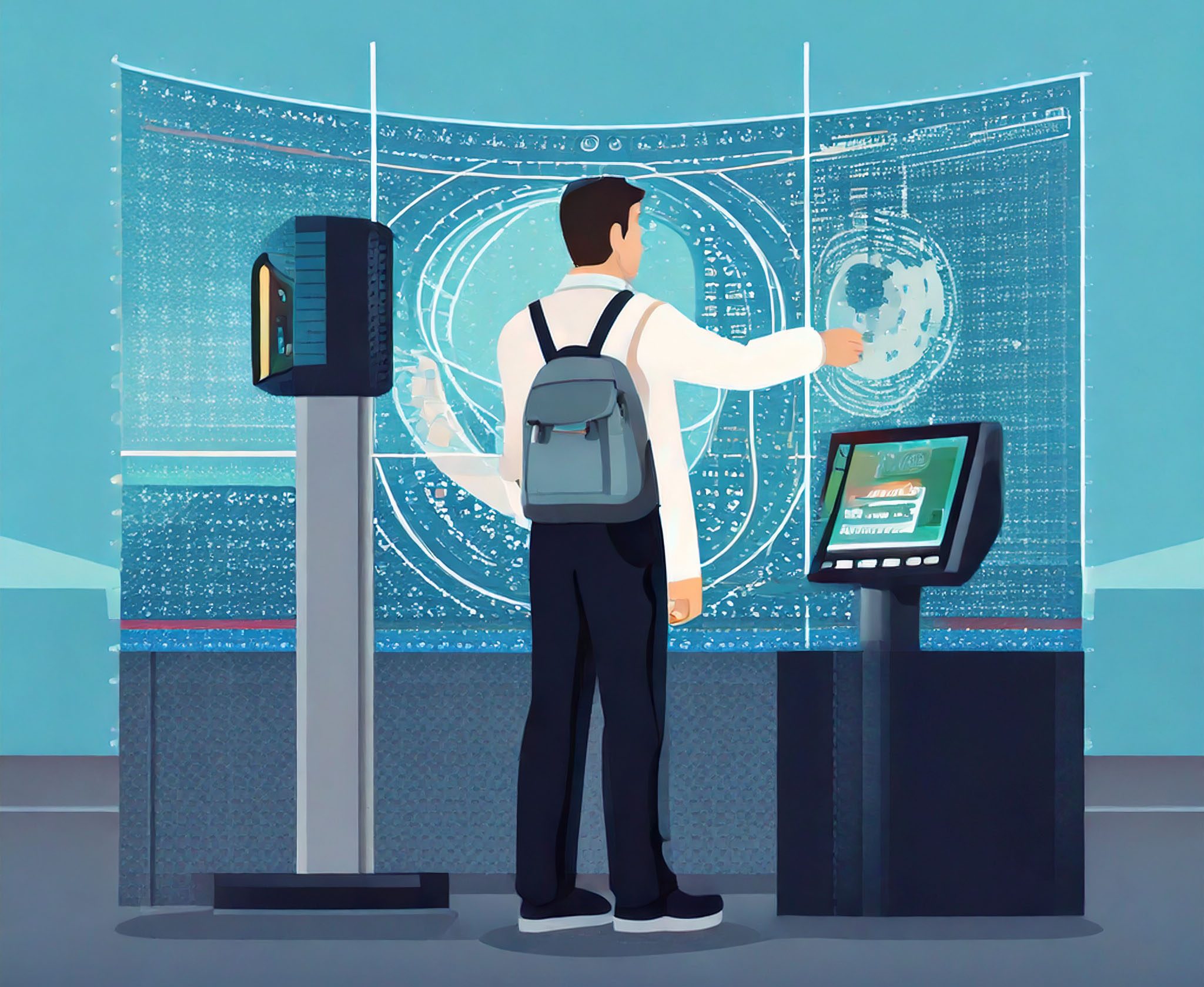“The Unvarnished Traveler” by Brian Raymond
“The Unvarnished Traveler” by Brian Raymond

For years, travelers from the U.S. have enjoyed relatively smooth entry into Europe’s Schengen Zone, thanks to open-border agreements among 27 European countries. However, starting October 2025, the way you enter and exit Schengen countries will change with the launch of the Entry-Exit System (EES). This new system aims to modernize border control by automating passport stamping and improving security.
If you’ve ever traveled to the U.S. as a foreign visitor, many aspects of the EES will seem familiar. It’s essentially Europe’s version of the U.S. Customs and Border Protection (CBP) entry system, which has used biometric and digital tracking for years.
So, what does this mean for your European vacation or business trip? Let’s break it down.
What Is the Entry-Exit System (EES)?
The Entry-Exit System (EES) is a new digital border management system for non-EU travelers entering and leaving the Schengen Zone. Instead of manual passport stamping, the system will electronically record and store entry and exit data, including:
- Your name and passport details
- The date and place of entry into the Schengen Area
- The date and place of exit from the Schengen Area
- Biometric data (fingerprints and facial scans)
The EES will replace the current system of manually stamping passports, which can be inconsistent and prone to errors. Instead, it will automatically calculate your allowed stay—90 days within a rolling 180-day period for U.S. travelers—ensuring compliance with visa-free travel rules.
Why Is Europe Implementing EES?
The European Union (EU) is introducing the EES for three main reasons:
- Enhancing Security – With automated tracking, authorities can better detect overstays, visa fraud, and potential security threats.
- Improving Efficiency – Digital entry records will make border crossings faster and more accurate than manual passport stamping.
- Standardizing Data – The system will unify traveler records across all 27 Schengen countries, preventing loopholes at different entry points.
The EES is not a visa, but it does lay the groundwork for the upcoming European Travel Information and Authorization System (ETIAS), a travel pre-authorization similar to the U.S. ESTA system. ETIAS, which is expected to start in mid-2025, will be required for American travelers before heading to Europe.
How Will EES Impact U.S. Travelers?
For most U.S. tourists and business travelers, the EES will be a minor adjustment rather than a major inconvenience. However, here are a few key things to keep in mind:
1. No More Passport Stamps
If you love collecting passport stamps, you’ll have to say goodbye! The EES will digitize all your entry and exit records, eliminating stamps. However, this means border agents won’t have to flip through pages manually, making the process smoother.
2. Faster (or Slower) Border Crossings?
In theory, EES should speed up the process by automating data collection. However, during the initial rollout, there could be longer wait times at some entry points as travelers get used to the new system.
Some Schengen countries, such as France and Germany, are installing self-service kiosks at airports and land borders, similar to the Global Entry kiosks in the U.S.. However, travelers should still expect some human interaction, especially when first registering biometrics.
3. No More “Border Hopping” to Reset Your Stay
Currently, some long-term travelers exploit loopholes by exiting and re-entering the Schengen Zone to reset their 90-day allowance. EES will strictly enforce the 90/180-day rule, making it harder to overstay. If you exceed your allowed stay, the system will flag you, potentially leading to fines or future travel restrictions.
4. Stricter Land Border Checks
Travelers driving from the UK to France (via Eurotunnel) or crossing into Schengen countries from non-Schengen neighbors like Serbia or Ukraine will experience tighter checks. Border officials will now scan passports and biometrics at entry and exit, preventing undocumented re-entry.
How Does EES Compare to U.S. Entry Systems?
If you’re wondering whether this level of tracking is unusual or excessive, it’s not. In fact, the United States has been using a similar system for years. Here’s how the EES stacks up against U.S. procedures for foreign visitors:
| Feature | EU Entry-Exit System (EES) (Oct. 2025) | U.S. Entry System (CBP & ESTA) |
|---|---|---|
| Biometric Data | Fingerprints + Facial Recognition | Fingerprints + Facial Recognition |
| Passport Stamping | Eliminated | Mostly eliminated (except some cases) |
| Electronic Record-Keeping | Yes, digital tracking of entries/exits | Yes, digital tracking of entries/exits |
| Pre-Travel Authorization | ETIAS (starting in 2025) | ESTA (since 2009) |
| Overstay Tracking | Automated tracking of 90/180 days | Automated tracking of visa duration |
In short, if you’ve ever visited the U.S. on an ESTA (the visa waiver system for travelers from Europe, Japan, and other countries), then you’ve already gone through a similar process. The EES is simply Europe catching up to what the U.S. has done for years.
What Should U.S. Travelers Do Before the EES Starts?
With October 2025 still over a year away, there’s no immediate action needed. However, as the launch date approaches, here’s how you can prepare:
✅ Stay Informed – Follow updates from airlines, travel agencies, and official EU websites.
✅ Prepare for ETIAS – If you plan to visit after mid-2025, you may need an ETIAS travel authorization (cost: €7 for most adults).
✅ Check Airport Procedures – Some airports will introduce self-service kiosks, while others may require manual processing.
Final Thoughts: A Small Change for Smoother Travel
The Schengen Entry-Exit System (EES) is a modernization effort that brings Europe’s border control in line with U.S. and global standards. While it may take some time to adjust, most U.S. travelers won’t experience major disruptions—just a more digital and automated way of processing entry and exit records.
If you’re planning a European trip in late 2025 or beyond, just keep these changes in mind. The days of passport stamping are ending, but in exchange, border crossings should become more secure, efficient, and predictable.
Have questions about how EES might affect your next European adventure? Feel free to ask in the comments!
So how to choose the right vacation for you?
Vacations are an investment! With literally thousands of options, choosing the right vacation and the best value is difficult to sort through. That’s where I bring my 12 years of travel experience and expertise to do this right, and get you the best value for your money. With the backing of the largest travel consortium behind me, we have options you can’t find online. Plus our work just gets started once we book your dream vacation. Chat with us to learn more.
The world awaits you and we look forward to assisting you in choosing the exact right adventure on the waters or land for you and your companions!









